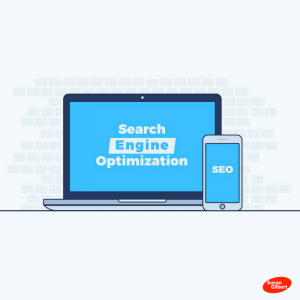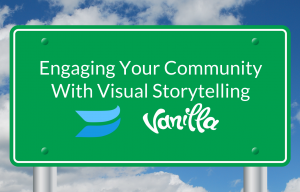![]() by Lyena Solomon November 27th, 2014
by Lyena Solomon November 27th, 2014
If you have been practicing SEO, you would have encountered a disconnect between what you were hired to do and what the client actually wanted you to do when they hired you. You thought your goal is to bring traffic. They thought you will bring them more conversions and revenue. They thought they will fix matters by changing your title to include “Lead Generation.” You thought, you need to explore a completely new angle of your job.
It turns out that bringing people to your website is not that difficult. Keeping them there, holding their attention, persuading them to take action and come back over and over again is a much more complicated task.
Jerry: “You know how to take the reservation. You just don’t know how to HOLD the reservation. And that’s, really, the most important part of the reservation – the holding. Everybody can just take them.”
The most important part of bringing visitors to your website is converting them into customers.
Simply put, it is all about them – the visitors. It is about their ability to complete tasks easily and quickly. If they are happy with their experience on your website, if they can find what they are looking for and what they found answers their question, they will be back. If it is easy to take action on your website and get expected (promised) results, they will become your loyal customers. And if you are better than your competition, your fans will talk about how great you are, turning their friends into your fans.
The process reminds me of successful wineries getting the most out of wine tasting events. They sent out attention-grabbing event invitation. You show up for wine tasting and it is all you anticipated and more. You love the atmosphere, the service, the wine. Before you know it – you are a member of the wine club, receiving quarterly wine shipments.
Sounds good? Let’s explore what it takes to turn visitors into company fans and advocates.
SEO + Usability + Conversion Optimization = CRO
Visitors and Revenue
Sitting in a tree
K-I-S-S-I-N-G
First comes SEO,
Then – Usability,
Then – Optimization,
to boost CRO.
SEO, usability, and conversion optimization have different tasks but one purpose: turn visitors into customers. SEO brings visitors to your website. Usability makes them feel good about your website because they found what they were looking for. Conversion optimization makes them like your company because it was the right solution for their problem at the time of their visit. Ultimately, they thought you were better than anyone else at that moment to help them. This is how you utilize great usability and conversion optimization to let them know that you will always be there for them. And they will help you achieve your economic goals.
Wikipedia has a good definition of conversion optimization. “In internet marketing, conversion optimization, or conversion rate optimization (CRO) is the method of creating an experience for a website or landing page visitor with the goal of increasing the percentage of visitors that convert into customers. It is also commonly referred to as CRO.” (Source)
You get better conversion if your website usability is good. Visitors already formed a favorable perception of your company and your website. And, most importantly, they look for and are able to find your landing pages easily. When your visitors are delighted with their experience, you gain authority and customer loyalty, you improve your competitive position and brand industry influence.
According to Jakob Nielsen, usability is a quality attribute that assesses how easy user interfaces are to use. The word “usability” also refers to methods for improving ease-of-use during the design process. (Source) In other words, it answers the question if your website is easy to use and how much learning is required to look around. If your website is too complicated, even tumbleweed will not stick around your fine establishment.
Together usability and conversion optimization work in concert to make sure the efforts put forth by SEO, PPC, inbound and outbound marketing, social campaigns, pays off. Done right, it is your most powerful duo that affects not only your revenue, but your reputation and relationships with customers. Working towards the same goal, usability and conversion optimization employ different strategies and focus on different aspects of conversion.
Differences and similarities
Goals and focus
Both usability and conversion optimization are ultimately aiming to increase conversion rate. Both focus on improving user experience. However, their desired outcome is different. Usability aims at somewhat intangible results: customer satisfaction and efficiency. Optimization strives to bring every visit to a very specific conclusion: conversion.
Usability focuses on user goals. It is impacting design functionality to address what visitors need. Good design allows customers and prospects to complete their mission easily and efficiently; they leave the website with a sense of satisfaction. It is likely that they will visit again, now that they know how the company can meet their needs and solve their problems through the website.
Conversion optimization is focused on company goals. Conversion pages are where the company asks visitors to turn their trust and support into action – buy, download, register, click, etc. Ideally, well-optimized page provides information a visitor requires to make a decision to convert or complete the action requested on the website. Customers also should leave satisfied with their choice to engage with your company on a deeper level.
After the conversion, your clients should be excited in anticipation of the next step – product arriving at their door, newsletter showing up in their inbox, whitepaper giving them valuable insight, etc. The relationship moved beyond your website. Not only did you get the visitor’s attention, you got their support and permission to contact them in the future. This is how good usability prepared the soil in which your USP seed was planted and took root.
Strategies
Not surprisingly, usability and conversion optimization use different strategies to achieve their goals.
Usability improves user experience by predicting user behavior. Once you discover what visitors want to do on the website, it is possible to create clear visitor paths. Make your website predictable, easy to read and navigate. Communicate what the visitors can do on each page and why they should do it. Optimize pages where you want your visitors to take action that brings you closer to achieving your company goals.
Conversion optimization influences user behavior to push them towards conversion. Your messages, images, and other content are all designed to persuade the visitor to take this last step and follow through with the call to action. Your visitors followed you here, to this page. Now you need to convince them to take the leap of faith that you are The One. The more you know about the consideration process of your customers, the easier it is to present just the right information at the right moment to make this leap easier.
You learn about your customers’ thought process and priorities through testing.
Testing
Since both usability and conversion optimization deal with user behavior, it is important to test our assumptions. We start out with formulating what we think our website visitors would do on our website. Through testing, we realize that website visitors follow a completely different plan. Improving usability and conversion optimization brings our assumptions and visitor plans together for a perfect harmony resulting in better CRO.
Both usability and conversion optimization employ similar testing tactics and affect similar aspects of a website. Both strive to answer the question: “Why are visitors leaving before converting?” Both use their findings to better predict or influence user behavior.
Sometimes, testing and changes affect global features of a website, like design, accessibility, information architecture and navigation [http://www.nngroup.com/articles/ia-vs-navigation/]. More often, tests are specific to the conversion funnel. Every page in the conversion funnel is optimized to move the visitor to the next step down the funnel. Optimized elements might include page title, headline, images, authority badges, reviews, call(s) to action, choice of words. Usability improvements usually revolve around the visitor journey: how easy it was to accomplish basic tasks, what errors they encountered and how quickly they recovered, how much they had to learn, and did they walk away satisfied with the experience.
Consistent testing allows marketers to learn about a decision process of their target audience and influence visitors to pick their company and not competition. Only with testing do we actually know what makes a difference and eliminate guess work as much as possible.
Usability or Conversion Optimization?
Good website usability and conversion optimization together turn visitors, that SEO and PPC work so hard to get, into satisfied customers and increase your revenue. While having different focus and goals, they both work towards increasing conversion rate through improving user experience.
According to Steelhouse, conversion rates range from 1 to 3 percent, on average. Are you better than average?
Most websites dont have a traffic problem, however every website has a conversion problem, according to Bryan Eisenberg. Do you have a conversion problem?
Understand your visitor journey and make it pleasant by improving your website usability.
Improve user experience by optimizing both for usability and conversion.
Optimize your conversion rate and enjoy the rewards that customers bring when they are happy with your website because it caters to their intentions.
Post from: Search Engine People SEO Blog
Usability vs. Conversion Optimization
—
Written by Lyena Solomon, Personal Blog
The post Usability vs. Conversion Optimization appeared first on Search Engine People Blog.
(397)








